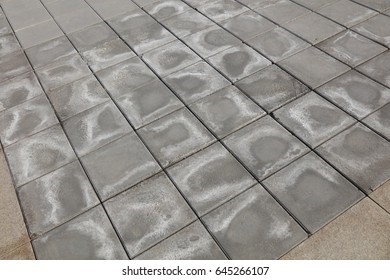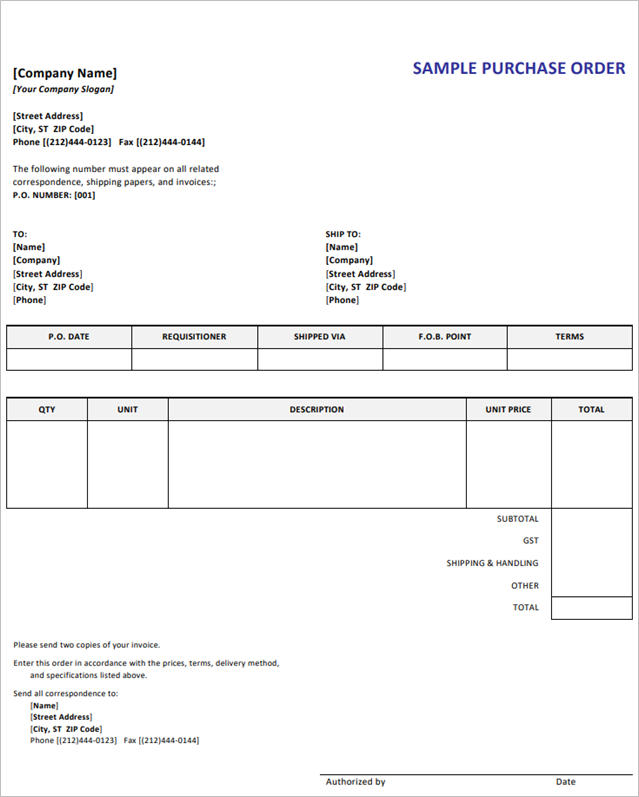Naturally, the contract of the current construction project you are undertaking will specify the building system you have to build. The specified building system will define the kind and quality of materials you have to use to construct the building. This section will discuss in-depth the structural adequacy and appropriateness of materials to be used in the building system specified in the contract.
Building systems
Building systems, commonly referred to as construction systems, are the combination of building materials used to build the main components of the building.
There are two common building systems, namely:
- High mass system
- Lightweight system
High mass system
A high mass system typically uses dense materials like concrete, brick and tiles. Also called a heavyweight system, this construction system is low maintenance because of the materials’ excellent durability.
On the downside, high mass systems utilise materials and components that are heavyweight, so there is a need for lifting equipment to be available on site. They also have high embodied energy which implies a more extreme impact on the environment.
Lightweight system
Compared to high mass systems, lightweight systems have lower embodied energy and yield a low total life cycle. If construction materials and components are to be sourced sustainably, then it will have lesser negative impacts on the environment.
A lightweight system is more ideal for regions with more temperate and hot climates because this system aids in the rapid cooling of the interiors at night. Well-designed buildings in temperate regions (like inland Queensland, New South Wales, and Western Australia) usually adapt a lightweight construction system.
There are often cases when the combination of a high mass and lightweight tend to yield the best environmental and economic outcomes. If this is the case, you would need a mixed mass system or composite system.
Deciding on the building system for your construction project entails considering the following factors:
- Its role in improving thermal performance
- Its durability vs intended life span
- The cost effectiveness
- Intended life span of the building
- Its energy consumption from manufacturing to disposal
- Impacts of all materials and processes on the environment
- Life Cycle Assessment
Structural adequacy and appropriateness of materials
Structural adequacy means the ability of the building components and materials to withstand or resist vertical load forces exerted by the building to these materials, in addition to the materials’ own weight.
The building system specified in your project’s contract will determine the type of materials that are necessary for you to complete the project. Evaluating the structural adequacy and appropriateness of the materials you will select can be based on three factors, namely:
 |
 |
 |
| Material compatibility | Applicability of material | Environmental impact |
Material compatibility with climatic, cultural, and aesthetic conditions
As discussed in the previous section, building materials are considered adequate and appropriate if they are adaptable to the climate of the region where it will be primarily used. For instance, the appropriate and adequate construction materials that will be used for colder regions would have replicated or adapted a prototypical design such as those that are utilised in regions like those in the Snowy Mountains in New South Wales.
A building system that is not made to fit the climatic conditions it will be exposed to will surely deteriorate at a fast rate and can cause harm to the potential inhabitants of the structure, as well as to the environment. The materials you have to select for the particular construction project must consider the climate zone of the building’s location.
The cultural and aesthetic conditions of where the building is to be installed must also be considered. For example, the type of roofing that is common to Western and South Australia would not fit well with the residential structures of New South Wales where brick and roof tile construction with the occasional hexagonal turret and steep pitched roofs are the more typical scenario.
Applicability of material to occupancy and size of building, including durability, structural and fire protection requirements
Materials to be used will also depend on their applicability to the building being constructed. The type of building will dictate the type and quality of material necessary. For instance, larger buildings, with the tendency for use of a large number of people, are built to be more durable than smaller buildings (e.g. residential buildings) as the former will be subjected to more wear and tear than the latter. Large buildings and buildings used by plenty of people should be built from materials with high fire resistance properties to ensure fire would not spread easily if in case it occurs, giving more time for building occupants to evacuate to safety.
Thus, the building materials that you are to select for the building systems in each establishment must be the most suitable, appropriate and adequate ones.
Environmental impact
Sustainable materials should also be an aspect to consider in select the right materials for construction. Sustainability means reducing the adverse effects of building materials to the environment, such as the amount of carbon emission emitted to manufacture building materials. Another characteristic of sustainable materials is its reuse or recyclable value, meaning eco-friendly materials can be recycled or reused to lessen the need for new materials to be produced.

The materials you will select for the current construction project will define the overall look and quality of the building or structure specified in your project plan. Section 1.2 discussed in detail the different properties of building materials. Those properties of the different building materials are not the only ones that must be taken into consideration when selecting and purchasing building materials.
Ultimately, the construction materials you will select for the project have to be safe, fire resistant, suitable to the building’s purpose, serviceable, and cost-effective. These can be determined through evaluating materials against relevant building industry standards.
Safety and fire resistance rating
Safety
A construction material is deemed safe when it does not pose any health or safety threats to the builders (during construction) and occupants of the building (once operational). Therefore, you should consider the safety, or hazard-free, aspects or features of materials in selecting those appropriate to the project. For example, if possible, solvent-based paints should not be used as they release toxic substances into the air that may cause respiratory damage.
Fire Resistance
Fire resistance is a key consideration when selecting materials to use. In Australia, bushfires are common occurrences, especially in the eastern section of the country. With the threat of both human health and safety and property damage, buildings should be ready from these hazards by using fire resistant materials.
Construction materials and components can be classified into four, with respect to their behaviour when in contact with fire:
 |
 |
 |
 |
| Combustible | Non-combustible | Ignition-resistant | Fire-resistant |
Combustible materials
Materials that readily burn are considered combustible. This includes wood and plastic materials and products.
Evaluating combustible materials based on their flame spread index and heat release rate can aid you in selecting materials that can withstand fire emergencies such as wildfire.
Flame Spread Index (FSI) rating
Using the Class A, B and C rating scheme, a material’s FSI rating measures the rate by which the material allows spread of flames. The FSI is determined with a numerical value, which is then given a Class A, B, or C rating. Below is the distinction between these three classes based on the numerical value.
|
Class Rating |
Numerical Value |
|
Class A |
0 – 25 |
|
Class B |
26 – 75 |
|
Class C |
76 – 200 |
Heat Release Rate
Evaluating a material’s heat release is done by measuring the amount of energy that comes off the material or product while it is burning.
Non-combustible materials
A non-combustible material is one that resists combustion. The non-combustibility of a material is evaluated by ASTM E-136 Standard Test Method for Assessing Combustibility of Materials Using a Vertical Tube Furnace at 750°C. This test requires four samples of the construction material or product to be tested.
If the material is truly non-combustible, three of four of the test samples must meet one of the two sets of criteria:
- When the weight loss of the specimen during the test is 50% or less, then
- The recorded temperature of the material is not greater than 30°C (54°F) above a temperature measured in the test apparatus.
- There is no flaming from the specimen after the first 30 seconds of the test.
- When the weight loss of the specimen during the test exceeds 50%, then
- The recorded temperature of the material is not greater than the temperature measured at a specific location in the test apparatus.
- There is no flaming from the specimen at any time during the test.
Aside from the behaviour of the material during this test, your respective building codes can also provide distinction between non-combustible and combustible materials.
Ignition-resistant materials
Ignition-resistant materials are those that resist ignition or flaming combustion. A material is considered ignition-resistant if its FSI does not exceed 25, and it does not show any evidence of sustained combustion after the 30-minute test period. Lumber is one of the most ignition-resistant material.
Fire-resistant materials
To test the fire resistance of materials and components, they are subjected to the common fire test where the material will be subjected to heat from gas burners. The test can last from 20 minutes to several hours, depending upon the construction assembly or material being tested. Gypsum board, bricks, and concrete are some of the most fire-resistant materials.

Based on these four classifications, it is most safe to choose a material or assembly that is non-combustible. However, if that cannot be avoided, the second safest to select are the fire-resistant ones. Fire resistant materials or assembly will not perform as well as non-combustible materials, but you are assured that no fire will develop or grow in such structures. The ignition-resistant ones come second to last as the safest, and of course, the combustible materials and assemblies are the ones you have to avoid at all cost.
Knowing the fire performance of the different materials will help you prepare for measures to take during fire emergencies should they happen in any stage of the life cycle of the building. This information should also be relayed to the clients or potential occupants of the building in order for them to implement measures to minimise this risk.
Suitability, serviceability and durability
Suitability
As defined in the National Construction Code, the suitability of a construction material means the material is fit for its specified purpose or application. Subchapter 1.2 discussed the application of select construction materials. Your choice of suitable materials must depend upon the material’s intended application while also considering the specific geography and location.
For instance, if the construction project you are working on deals with the installation of roofing in regions with colder climates, a metal roofing is the most suitable component to be used. Not only will snow slide off easily a metal roofing, icicle formation on the surface will also be eliminated.
Additionally, the NCC has specific provisions to assure the construction materials' suitability with their intended application and purpose. Chapter 2.7 will discuss the different evidence of suitability that would verify the material or product’s compliance with the NCC requirements and standards.
Serviceability
Serviceability determines the extent of the utility and functionality of the construction material. Serviceability considers the safety and comfort of the occupants as well as the building’s intended use and other conditions outside the structural aspect of the building. For example, excessive swaying on the top floors of a high-rise building may deem it unserviceable. Although the structural integrity of a building is not compromised, the swaying can induce fear to occupants, as well as motion sickness and weakness. Thus, it compromises the safety and comfort of the people in those floors.
Durability
A construction material or product’s life span is influenced by its ability to withstand damage and wear over time. A durable material or product tends to endure harsh conditions and forces it is subjected to over a long period of time.
Choosing durable materials will not only aid you to maximise project expenditures but will also ensure that the perceived long-term goals of the client for the building will be met.
Provisions on the durability of materials can be found in industry standards such as:
- AS 3600:2018 Concrete Structures
- AS 3700:2018 Masonry Structures
- AS 5604-2005 (R2016) Timber – Natural durability ratings
You can check the website of Standards Australia and the SAI Global store for specific Standards for material durability.
Cost-effectiveness
Cost-effectiveness is one criterion to consider in selecting and procuring building materials. Using construction materials that are renewable, sustainable and can be converted from naturally occurring materials can help you achieve cost-effectiveness in choosing the construction materials.
Your choice of the best construction material to purchase must not only depend on one criterion. The safety, fire resistance, suitability, serviceability, durability and cost-effectiveness of a material must all be considered in selecting the construction materials for use in the project. It may be difficult to find construction materials that will fit the bill, so it is important to distinguish which among these criteria are the non-negotiable ones for your construction project and work your way from there.

Naturally, building materials will eventually cease to serve their intended purpose. Whether it is the environmental conditions, its load, or the wear and tear over the years that contribute to its degradation, it is all but natural for a material to exhibit signs of degradation and deterioration, especially after having served its function.
Degradation of materials
Natural factors
Various natural factors play in the degradation of construction materials.
The material’s natural ageing can cause degradation by biological factors as it endures wear and tear over time. Exposure to different weather elements such as weathering, freezing temperatures, and strong winds can also contribute to the deterioration of some construction materials. Radiation from too much exposure to sunlight can also bring about the degradation of parts of the building such as roof components. Organisms such as insects and fungus cause rot in timber, which leads to its decay.
Shrinkage
Shrinkage is the change in size of a material, usually in volume or length. Degradation by shrinkage is most common between cement and timber.
Shrinkage in cement manifests in its change in volume and is generally expressed in percentage values. Factors leading to shrinkage include:
- Humidity and hot climate conditions lead to rapid evaporation which makes the concrete shrink.
- Too much water in the water-cement ratio will cause shrinkage in concrete.
- Small size aggregates mixed into the concrete will block the finer aggregates, allowing the entry for more water; hence, the concrete shrinking because of the moisture content.
To avoid shrinkage in concrete, it is advisable to follow proper water-cement ratio and correct method of mixing concrete. When possible, keep the water content of the mixture to the minimum practicable level so that shrinkage can be minimised.
On the other hand, timber shrinkage is caused by the absence of moisture, especially when already installed or assembled with other construction materials. This shrinkage may cause cracks and gaps in the timber itself.
To avoid the changes in timber size, let the material acclimatise to the climate of the place before it is installed or assembled with other building materials.
Corrosion in metals
Corrosion is the result of chemical processes on metal, especially when it comes into contact with liquid. It often happens when metals are not stored and handled correctly. Thus, proper measures in handling metals must be put in place. In Section 1.2.1 of this Learner Guide, the different ways to treat and avoid corrosion in metals were discussed.
Chemical factors
No material is ever exempt from degradation due to chemical factors. The following factors cause chemical degradation:
- Alkali – When alkaline cement paste and silica-based aggregates (like ceramics) react, their reaction leads to cracking.
- Sulphates – Sulphates present in water may cause levels of stress in the building materials when they react with concrete.
- Leaching – Some porous materials are weakened when its mineral content comes in contact with liquid solutions.
- Acid rain – Acid rain dissolves calcite in marble or limestone, which lead to their degradation.

Loading
The loading condition a construction material is subjected to can also cause its degradation. When materials with low toughness are subjected to dynamic loads like people, wind, waves, traffic, earthquakes and blasts, they tend to deteriorate faster.
When the building material or structure is constantly subjected to varying dynamic loads, this results to growth of fatigue cracks. The development of crack continues as the building material is further subjected to more fatigue-inducing load.
Building life cycle
A building’s life cycle usually consists of the following phases:

Product phase
This phase is the initial phase in the life cycle where construction materials and products are selected and procured.
Construction phase
In this phase, the construction products and materials are then transported to the building site. The construction then commences, and all planned and necessary installations and assemblage of materials and products are started.
Operation phase
Next comes the phase wherein the building finally serves its purpose, whether it is for residential or commercial purposes. During this phase, maintenance, repair and replacement of building components are done as necessary.
Disposal phase
This phase involves activities such as the demolition of the building, disposal of wastes, and transporting all those wastes into either landfills or the place where they are to be reused or recycled.
Degradation of materials can occur in any of the phases in the life cycle, especially in the first three phases – product, construction and operation phases.
Mishandling and improper storage of materials during the product phase can lead to an abrupt end in the life cycle of the building, thus rendering the procurement of the materials pointless. This leads to more severe problems such as exceeding budget allocations and going over the time schedule because of the need to repurchase the materials that need to be replaced.
In the construction phase and operation phase, the chemical factors, corrosion in metals and loading are the most common causes of degradation. These are the phases where the processes of assembly and installation of the material must be meticulously done in order to not compromise one material in favour of another, in case of incompatibility.
In certain events when the materials specified by the contractor or designer is unavailable or deemed unsuitable for particular reasons, it is best to consider other materials which can function the same way as the unavailable or unsuitable materials.
Alternative / sustainable materials
- Straw bale
- Mud brick
- Hemp
- Engineered timber
- Structural Insulated Panel System (SIPs)
Straw/straw bale
Straw bales are readily available and renewable materials that have great insulation properties and fire resistance. The use of straw bale can be traced back to as early as the Palaeolithic era, especially in the regions of Africa. Although not as conventional as the usual brick used in structures, straw bale construction has been gaining popularity because it promotes greener and more-environment friendly construction.
Being a by-product of agricultural processes, straw bale is easily accessible in agricultural regions. With low embodied energy, the life cycle of straw bale is energy-efficient, with its bailing process and transport the only processes that expend so much energy.
On the downside, straw bale is susceptible to moisture and mould if not stored and handled properly. Too much moisture absorption will lead to cracking and decay in the straw bale. That is why, additionally, sourcing and transporting straw bales can imply large costs if they are not available anywhere near your construction site. Aside from issues due to distance, transporting straw bales also requires much physical labour because of their heaviness and bulkiness. Rodents and other critters can also be a source of problem for straw bale structures, especially if not maintained well.
Straw bale is ideal for use as a load-bearing structure and non-load bearing structure.
Mud brick
Also called adobe, mud brick is made from a mixture of mud, sand, loam and water, bound by a fibrous material such as straw or rice husks. This mixture is then placed into moulds and dried in the open air. When used in structures, mud bricks are joined using mud mortar. With its production requiring and utilising very little generated energy, mud brick is one of the most renewable and sustainable resource materials.
With clay being its main ingredient, mud brick has great water resistance; however, if the mud brick structure will be used in an area with wet conditions, the provision of eaves as protection for the walls must be ensured. Mud brick structures are very durable and have great resistance against fire and vermin. However, mud bricks do not have excellent insulation. To comply with the requirements of BCA, insulation linings need to be added to the external mud brick wall.
Mud bricks can be built between timber or steel frames and can be made into loadbearing walls. This will help make up for the lack of insulation mud bricks have.
Hemp/hempcrete
Hemp, both in and outside the construction industry, is considered a wonder plant with abundant uses. Being one of the most rapidly renewable materials, hemp can be made into hemp core board that does not only serve insulation purposes, but also contributes to cleaner interior air quality in buildings. Hempcrete structures also have great resistance against fire and cracking under movement, making it ideal for structures and buildings in areas that are prone to earthquakes and other seismic activities.
Hemp is very versatile, having many applications ranging from cabinetry, shelving, furniture and even moulding. It can serve as an alternative to concrete and traditional insulation components.
Engineered timber
As discussed before, engineered timber can be considered as an alternative to solid wood and provides stability and excellent stress performance. Much like any normal timber, engineered timber can be used for doors, window frames, stairs and insulated panels.
The production of engineered timber is usually more costly than brick or concrete. Using engineered timber also usually requires much maintenance because of its tendency to develop moisture which eventually leads to rot. If used in a structure, it must be ensured that the building design allows for the ventilation of timber in order to minimise the risk of rot and beetle and worm infestation.
Structural Insulated Panel Systems (SIPs)
Unlike the materials above, SIPs are not all-organic or natural materials. It is a building system for residential construction that is energy efficient, cost-effective, and not to mention, impressively strong.
SIPs are made up of two oriented strand boards sandwiching an insulating foam core. These panels are not only made for internal and external wall structures but can also be used for roof and floor surfaces. Being stronger and less vulnerable to shifting, SIPs are superior to the traditional wood framing.
SIPs can be used as a sustainable alternative as using SIPs in buildings uses less energy to regulate temperature (heat and cold). They also help reduce constructional waste and allow for better control over indoor environmental conditions.
Evaluating and considering alternative materials
In the rare event that your preferred building material is not available for purchase from your preferred supplier, or from any manufacturer, it is high time to consider utilising alternative materials, which are the sustainable and renewable ones.
These alternative materials are to be evaluated in the same manner that manufactured materials are evaluated, with a little wiggle room to accommodate certain variations from the expected and indicated standards they have to meet.
Establishing these allowable tolerances for any deviation in the quality of these non-conventional materials is important in order to not fall short of what is required by your construction project’s specifications.
After evaluating the different construction materials against a number of criteria, examining how they degrade, and considering other alternatives for unavailable materials, you should have sufficient knowledge already of which materials to select and purchase for the current construction project.
As you have learned in the previous sections, the choice of the materials to be used in the construction project is ultimately dictated by the project contract and construction specifications. Unless there are provisions for when the specified materials are not available, you must consult with relevant professionals and the client first before finalising the selection of materials to be purchased.
Contractual requirements
The contract will usually have provisions on the materials to be used in the construction project. Most likely, the requirements will be based on the following:
- National construction code – Contracts may use the NCC as reference guide for the quality of materials to be used. These usually constitute to the technical and safety aspects of the building. The NCC also accounts the materials to be used depending on the building class of a specific structure.
- Building plans and specifications – The contract will also require materials that will satisfy the requirements found in the building plans and specifications, such as the form and design of the building.
- Industry standards – There are various Standards, such as the International Standards and the Australian Standards, that can be referenced to determine the quality of materials to be used for the project. These can become provisions under the contract or can be present in other requirements such as the NCC and statutory requirements.
- Statutory requirements – Legislations may require compliance with particular specifications of materials used in construction. Otherwise, it would be considered negligence or even an illegal act on the part of the construction team. Usually, this is in the form of complying with the NCC but there may be specific provisions that the local jurisdiction requires adherence to.
Consulting with relevant professionals and the client
Relevant professionals
There is a wide array of relevant professionals you can consult regarding the finalisation of your selection of the construction materials to be procured. These relevant professionals can either be stakeholders of your current project or professionals who have had similar experiences in the industry but are not involved in your current project. All in all, they can provide expert advice in selecting materials needed for the construction project. These professionals can include:
- Manufacturers
- Architect
- Designers
- Cost Consultant
- Civil and Structural Engineers
- Contractors
- Site Manager
Manufacturers
Manufacturers possess extensive knowledge on materials they produce. In selecting the final construction materials for your building project, you can consult them for specifications and design of the materials you may need from them. This will help you have several options to consider that will meet requirements of the building.
Architects and building designers
Architects and building designers are concerned with the designs and plans of the various structures of the construction. The requirements relating to the aesthetic, visual appearance and functionality of the building are their main concerns. Therefore, you may consult them to aid in finalising the materials that will meet the requirements mentioned.
Cost consultants
Cost consultants are the ones tasked with providing estimates of the construction budget. They can give advice on the procurement route or strategy to take. Their expertise can aid you in deciding which materials are best for the construction within your allocated budget.
A civil and structural engineer’s
A civil and structural engineer’s expertise lies on the assessment and inspection of structures. Given their experience, they have valuable insights on which materials and components are most suitable for your project in terms of the more technical aspects of the building, such as structural integrity and durability of materials. This is important for the longevity of the building and the safety of those using or occupying the building.
Principal contractor and subcontractor
You may also consult the principal contractor, and even subcontractors, for feedback on types of materials to use for the building as they usually are the ones who will install the materials during construction. Their experience on materials can be vital responses to help you choose the right materials for the project.
Other construction managers
Other construction managers like yourself may also have helpful insights on the final selection of building materials. Their experiences from handling construction work can also serve as your guide in finalising your selection of materials.
The Client
Of course, communicating with your clients is very crucial, as they are the ones who will have the final approval on the building project, including the materials to be used. You should share any insight and feedback you have gained from consulting relevant professionals. If possible, you may let the client accompany you when consulting the said professionals. You may also hold a meeting with all of them.
You can communicate with these professionals and the client through chat messages, phone calls, email correspondence or any medium as long as it abides by the requirements prescribed in your contract. Do not forget to record all communication made with them to help track the information and, in turn, review all the responses you have gathered from them.
The previous sections have helped you in assessing and selecting the building materials you will need for your construction project. They provided numerous considerations to be able to select the right materials that will fit those requirements. Once you have finalised which materials to acquire for your project, you should proceed with procuring and ordering the materials. Remember that you should follow the purchasing requirements of your construction organisation.
Building supply chain

Procurement is a part of a larger chain of material processing and distribution called the building (or construction) supply chain. The building supply chain is made up of three major processes, initiated by the release of materials into the market for sale. What follows is the procurement process. Once procurement is done, the construction materials are delivered and then used when building work ensues.
There are various people responsible for work to be carried out in each process. The building supply chain dictates that the relevant person for each phase has the obligation to assure that the products and processes comply and conform with the standards and the requirements.
Procuring materials
In building construction, material procurement is the process of acquiring and securing the necessary materials required to construct a building or structure. This is a very integral part of the construction project because everything that you will be working on and working with, especially the materials, products, components, equipment and plant, will be defined by the specified procurement method and purchasing requirements.
Procuring materials involves selecting and contracting with the appropriate suppliers whom you will acquire the materials from. Once you have a list of your potential suppliers, ask them for written quotations, and if possible, a sample of the materials you would be needing. This information will allow you to effectively evaluate suppliers and determine which can fit your needs.
Key factors to help you choose the best suppliers for your project include:
 |
 |
 |
 |
 |
 |
| Price – Ensure that you are not sacrificing the quality of materials for the sake of a lower price. Materials of poor quality may cost less initially but the cost of replacing them may result in more expenses in the long run. | Reliability – Suppliers must have a proven track record of delivering the right materials on schedule. Aside from being consistent with delivery times, the materials they supply must also be of quality and compliant with relevant standards. | Size of Suppliers – Larger suppliers have more resources to address delays with transport of materials, damages to materials during transport, or defects in materials. On the other hand, you are more likely to establish a strong business relationship with small suppliers; this may result in a more efficient service and potential discounts. | Stability – Suppliers that are stable are those that are considered reliable and financially secure. This minimises potential risks such as financial loss and project delays to your organisation. | Location – Working with suppliers that are located far from the construction site increases the risk of delays and damage to materials. It may also incur higher delivery costs. | Supplier Background – You must perform due diligence on potential suppliers to confirm if they are compliant with relevant legislation, financially secure, and consistent with the service they provide. |
Here are the steps to procure building materials:
- Determine products and materials to be used. The materials to be used for the building should be based on the contract agreement, as well as the various criteria and consideration discussed in the previous sections.
- Determine possible suppliers. As discussed earlier, you can determine your potential suppliers through these factors: the price, their reliability, size, stability, location and background.
- Check conformity of products to standards and legislations. Verify the compliance of materials (as discussed in Section 1.3.3) through Australian Standards, the National Construction Code and various legal requirements set forth by legislations of the appropriate States and Territories of Australia that apply to your project.
- Check availability of materials. You may inquire your potential suppliers to check who has ample supply of materials you need. You can also ask or research the quality of materials they provide to consumers and contractors.
- Obtain quotes from suppliers. Once you have selected your potential suppliers, you should now request for quotes of the materials needed in your project. Quotes are price estimates of materials that you and your supplier can agreed upon. Compare quotes from the different supplier to see and choose the supplier who provides the most economical or value for money for the materials.
Ordering materials
Once you have chosen the materials and have procured and reached agreement with the supplier, you are ready to order the materials you need. Ordering the materials means to request acquisition of the materials for a certain price. To formally order the materials necessary for the project, you must provide a purchase order.
A purchase order (PO) is an official written request made by your organisation to the supplier for the purchase of materials. The PO also contains the terms and conditions for the payment and delivery of the materials. Specific details on these include:
- Material code
- Material unit
- Material description
- Quantity of material
- Price (per unit and total, including shipping if applicable)
- Payment method and terms of payment
- Date, place and method of delivery
Once filled out, the purchase order is sent to the supplier to review if materials are available as requested. Once the supplier accepts and confirms this, the PO is now legally binding, creating a contract between your organisation and your supplier. This means the supplier agrees with the purchase order and will fulfill the order based on the terms written in the PO, while you agree on purchasing the materials based on the price agreed in the PO. Before the delivery of the materials to the construction site, the payment method must be made based on the purchase order. Another contract may be recommended to further detail the payment method to the supplier.
A sample purchase order is provided below as a reference.

Organisational purchasing requirements
Each organisation has its set of pre-defined purchasing requirements that must be adapted from construction industry standards. You should comply with them as they have set these requirements to be able to properly procure and purchase the materials. Below are some examples of the requirements that you may encounter:
- Policies on procurement and purchase may have their own criteria on selecting the right suppliers to contract with (apart from those mentioned earlier).
- Organisational policies may have their own template for purchasing documents, such as the purchase order and delivery order. They may even require exclusive use of these templates, to ensure consistency and organisation.
- Your organisation may also have information on who will be responsible with the procurement, ordering and receipt of delivery of materials.
- The organisation may also prefer suppliers who it has worked with before or who it has a good business relationship with, to ensure reliability.
It is important to consult organisational policies on procurement and purchase to make sure the purchasing process you will be doing will meet the provisions of the policies. When in doubt, consult relevant people, such as project or organisational procurement officers, for any concerns or issues in the purchasing process.

There are many ways by which you can assure that the building materials and components you have procured and are to procure are suitable and comply with the requirements of the NCC. One of these is by requiring your building suppliers or manufacturers to provide you with proof or evidence of the material’s suitability for application.
One method by which you can demonstrate that the construction material or structure complies with the performance requirements of the NCC is by evidence of suitability.
The evidence of suitability affirms that the construction material adheres to the requirements set by the NCC. There are various forms of evidence of suitability that you can use, depending on what the circumstance necessitates. The evidence of suitability framework presents them in a manner that will reflect hierarchy of which bears a stronger degree of evidence and which is inherently more rigorous to obtain.
Up-and-coming innovative building components and structures typically require a more thorough assessment to prove their compliance. When the compliance of a new or a high-risk material is verified by a certification scheme such as CodeMark, the industry is more assured that there is conformity in the certification processes.
On the other hand, some components that pose little risk, or have established a strong reputation and history of success in Australia for many years, may require the less rigorous and less extensive forms of assessment to prove that they abide by the NCC.
Evidence of suitability framework
The assessment options detailed below are not mutually exclusive. One element from another option may be used together. You may also observe the supplier or manufacturer using more than one from these options as they see fit. Ultimately, it is the appropriate authority involved who will verify the suitability of their options.
Below is the evidence of suitability framework.

CodeMark or CodeMark Australia Certificate of Conformity
CodeMark and CodeMark Australia are both Commonwealth of Australia-owned voluntary third-party certification schemes that certify building products and systems.
The Certificate of Conformity contains clear information on how the building product is to be specified and installed, in order to guarantee its compliance with the NCC.
This assessment option is the most thorough and rigorous among the six. This is especially because the certification schemes CodeMark and CodeMark Australia ensure that once verified of NCC compliance, a building component is recognised as NCC-compliant nationally. This entails no repeated tests and evaluations for the building material or component, which in turn fast tracks the approval of building and other inspection processes.
Certificate of accreditation
A Certificate of Accreditation is typically issued by an accreditation authority in your respective State or Territory under the State or Territory legislation that applies to the situation. The accreditation authority of your State or Territory will have to assess the compliance of the building material or structure with the NCC.
The certification issued by your state or territory’s accreditation authority may be used as evidence of suitability in another jurisdiction for the mere purpose of confirming compliance with the NCC, but only if the appropriate authority deems it appropriate and allowable.
Example: Certificate of Accreditation in Victoria
The Victorian Building Authority (VBA) operates an accreditation system and a Certificate of Accreditation issued under the accreditation system is evidence that a product meets the requirements of the Victorian Building Regulations and the NCC. Once a product is accredited, legislation in Victoria requires that building control authorities accept the product, design, component or system if the use complies with the accreditation. The VBA accreditation system only applies to a product, design, component or system that is used as part of a Performance Solution. The VBA maintains a register on its website of current certificates. Further information on the building product accreditation system can be found on the VBA website (vba.vic.gov.au).
Certificate issued by a certification body
Another option to acquire evidence of sustainability is to have an independent certification body verify the component’s compliance with the requirements of NCC. The certification body, commonly known as Conformity Assessment Body (CAB), must be accredited by the Joint Accreditation System of Australia and New Zealand (JAS‑ANZ).
The certificate issued by a CAB must state that the building material meets specific requirements of the NCC. Additionally, the certificate must also indicate necessary information, including:
- Date the certification is issued
- Duration of the certification’s validity
- Signature of the CAB
- Other relevant information
Report issued by an accredited testing laboratory
This report issued by an Accredited Testing Laboratory must show that the building material or product was assessed and proven to be suitable for use in the building through undergoing specific tests. A test certificate may also be issued by the same accredited testing laboratory to verify that a particular building material or component meets the specified requirements.
Using this option means that you are to seek for an accredited testing laboratory, which can be any of the following:
- A testing laboratory accredited by the National Association of Testing Authorities (NATA)
- A laboratory accredited by an organisation that has a mutual recognition agreement with NATA
- An organisation recognised as being an Accredited Testing Laboratory under legislation at the time the test was undertaken
The document that the Accredited Testing Laboratory is to issue should detail the tests the building material or component has been subjected to, the corresponding results of the test, how the material or component complies with the NCC requirements, and other important information that will demonstrate its suitability and appropriateness.
Certificate or report from a professional engineer, recognised expert, or other appropriately qualified person as appropriate
For this evidence option, the supplier or manufacturer would need to enlist the involvement of either a professional engineer, or any recognised expert and appropriately qualified person in the industry.
A professional engineer is someone who is registered in the engineering discipline, and who has competent knowledge, skills, and experience relevant to the building component concerned. An appropriately qualified person, on the other hand, is one who is not necessarily registered as a professional in the industry, but one who is equipped with competent skills to verify the suitability of a particular building component through their qualification, experience, or both.
These personalities must be recognised first by the appropriate authority before they carry out the assessment process.
A professional engineer or qualified person must issue the report verifying that the building component is suitable for its application. The report or certificate must also:
- Detail the basis of verifying suitability
- Indicate any specifications, standards, publications, or documents referred to in verifying suitability

Another form of documentary evidence
This option entails the submission of other documentation, which demonstrates compliance with the NCC.
This evidence option cannot be used by itself alone and is merely a reinforcement for other evidence options.
Supplementary evidence to be submitted under this option should:
- Suitably describe the subject of the document
- Set out any conditions that the statement of the verification lies upon
- Describe limitations to the statement of verification where applicable
- Contain or refer to construction or installation standards where necessary
- Reference any standards, test reports, specifications or other publications relied upon for verifying suitability

